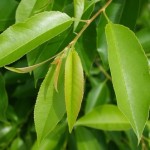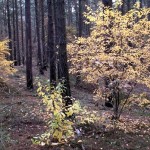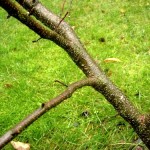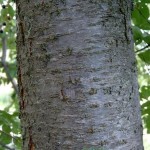Wild Cherry Bark – Prunus serotina
|
Current Demand = Normal |
Parts Used: Tree Bark |
 |
 |
 |
 |
Family: Rosaceae
Common Names: Virginian prune, black cherry, black choke, choke cherry, and rum cherry…
Description:
The Wild Cherry Tree is a deciduous tree that reaches up to 30 feet in height. The leaves alternate, are simple and oblong to nearly oval, 3-4 inches long with pointed tips and a round base. They are dark green on top and a paler green on the bottom. Several flowers, white, appear in a loose terminal raceme.
The fruit is dark red to purple drupe about 4-8mm in length. The twigs are gray, slender, and stout and have grayish dot-like protrusions. The bark is smooth, gray-brown, conspicuous lenticels that develop into shallow fissures; young stems have shallow peeling, curling layers. The roots form an extensive lateral root system where sprouts and suckers readily appear.
Planting/Cultivation:
Growing region: Wild cherry is found very common in the United States from southern Maine to Florida, west to Texas and Kansas. It can be found along fence rows and roadsides to dry woods and pastures. Larger trees will be found in woods with rich soil. The plant prefers abundant moist soil with lots of water, space and fertilization. It is propagated by seed.
Seed: use the cool, moist stratification of planting the seed, lasting 120-160 days and at temperatures of 36-41 degree F. Transplant the plant in the spring to a permanent home. See harvesting and drying next
Harvesting/Drying:
Parts Used: tree bark
Cherry bark is sold in two different ways: thick bark and thin bark. Thick cherry bark is peeled from the main trunk of the tree. Thick bark is generally brown and ribbed on the outside or dark gray to black and rough. Thin cherry bark is smooth and gray on the outside with hints of red showing through the breaks in the bark as it matures. Thin cherry can be peeled from the trunk of the younger trees before it begins to form thick brown ribs.
In many areas Wild cherry is plentiful and often seen as burdensome to land owners as they can be a danger to livestock.
When land is being cleared for development or timbering these trees are usually pushed over and burned as scrap. Most land owners will and should allow you to collect all the fresh bark available that would otherwise be wasted. When harvesting standing cherry bark, the same rules apply as with other trees. Peel only one side of the tree or branch allowing the tree to heal and continue to grow. Pruning branches from smaller bushy cherry trees also works well for gathering thin bark. Do not collect bark from dead or decaying trees as it has no value.
Never mix thick and thin bark or you will be paid for the cheaper thick bark. Depending on market conditions, thin bark generally pays four times more than thick bark.
Tree bark is best dried indoors although it can be dried in the sun. Drying time will depend on weather conditions, for example: high humidity will slow the drying process; also thick bark will dry slower than thin bark. The more air you can get around each piece of bark the better it will dry. A thin layer of bark will dry much easier than a pile of bark. When cherry bark is dry it will be brittle and snap not bend. Once it is dry, store the bark in paper bags, cardboard or burlap. Never store dried roots, herb or bark in plastic or it will mold.
Attributes (Images)
By Krzysztof Ziarnek, Kenraiz (Own work) [CC BY-SA 3.0], via Wikimedia Commons
 Root Buyer
Root Buyer